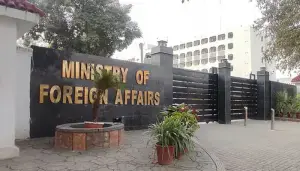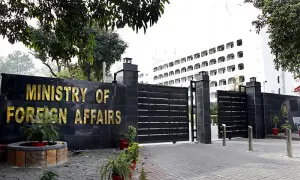Hiring spree by China’s debt-laden local governments fuels fiscal fears
BEIJING/HONG KONG: Some of China’s most indebted local governments are on a hiring spree, a move that analysts say could put fragile regional finances under more strain as officials seek to create jobs for a record number of graduates entering the workforce this year.
China’s huge and rising local government debt, totalling $9 trillion, or about half the nation’s gross domestic product, is one of the biggest threats to fostering sustainable growth in the world’s second largest economy.
Beijing has said defusing these debt risks is one of the government’s major tasks this year, while it’s also prioritising job creation in an economy still reeling from years of costly COVID-19 lockdowns, travel curbs and other containment measures.
In poorer areas, which are bleeding people and private business to urban centres, the task of providing jobs falls more squarely on local governments at a time they are struggling to raise revenue through income tax and state land sales.
“This type of strategy could be partly calculated to keep educated young people within the province, rather than seeing them leave for more developed regions,” said Jack Yuan, vice president and senior analyst at Moody’s.
However, “budgetary and debt pressures are more acute for these provinces, so increasing expenditure comes with additional fiscal risks,” Yuan noted.
The provinces of Gansu and Yunnan as well as the region of Guangxi, are set to see the biggest percentage increase in hiring for civil servants in China this year, according to Offcn Education Technology Co, one of the country’s largest tutoring firms for the public service examination.
Gansu, in China’s arid, remote northwest, plans to hire 4,249 civil servants, nearly 80% more than last year, while Yunnan and Guangxi in the country’s mountainous frontier to the south, will add 5,696 and 6,781 personnel, an increase of 59% and 55%, respectively.
The overall number of jobs being added across mainland China’s 31 provinces, regions and municipalities, is around 190,000, a 16% increase from 2022, financial media outlet Caixin reported.
The local governments adding the most jobs in relative terms are also among the most indebted. Yunnan’s outstanding debt to fiscal revenue hit 1087% last year, the highest among all provincial-level economies. Gansu was third at 970% and Guangxi was fifth at 910%, according to research by Chinese brokerage TF Securities.
The local governments of Gansu, Yunnan and Guangxi did not respond to a request for comment and Reuters could not establish exactly why the governments are ramping up hiring and how it will impact their finances. But it is causing anxiety among economists.
“If state land sales continue to worsen in those regions, such large-scale government hiring spree will be unsustainable,” said Nie Wen, a Shanghai-based economist at the investment firm Hwabao Trust.
‘EMPLOYMENT FIRST’ In his first speech as China’s new premier earlier this month, Li Qiang said the country needed an “employment-first” agenda, with the government setting a job creation target of 12 million, up from last year’s 11 million, even as it aims for a conservative GDP growth target of around 5% this year.
China needs to create jobs for a record 11.58 million college graduates expected to join the workforce this year, a hard task at a time the jobless rate for those aged 16 to 24 is at 18.1%, hovering near an all-time high.
The jobs being sought by Gansu, Yunnan and Guangxi are mainly in the law, finance and accounting departments, and application requirements are more friendly to college graduates, said Offcn, the tutoring firm.
A civil servant in Gansu, who spoke to Reuters on condition of anonymity because he was not authorised to speak to media, said the hiring spree is partly to replace retiring staff but comes as some local employees have also suffered pay cuts.
As well as central government funding, many of China’s localities rely on so-called local government financing vehicles (LGFVs) to raise extra capital from bond markets for the likes of infrastructure projects.
The total debt of China’s LGFVs has swelled to a record 66 trillion yuan ($9.5 trillion), from 57 trillion yuan last year, according to an International Monetary Fund (IMF) report last month.
These LGFVs, which proliferated after the financial crisis of 2008 as a way to let local governments get round a ban on direct borrowing, are not technically guaranteed and many hold assets of dubious quality like roads to nowhere and empty airports, analysts say.
While there have been no public reports of an LGFV default, some have had loans extended. Moody’s Yuan said local governments including Gansu have faced increased refinancing pressure to meet their debt obligations.
This is why he and others are concerned that any attempt to create jobs and pursue growth too aggressively, could lead to more financial problems in places already fiscally stretched.
“Usually this high growth rate and high debt rate is a very risky story,” said Iris Pang, chief economist of Greater China at ING.
For the latest news, follow us on Twitter @Aaj_Urdu. We are also on Facebook, Instagram and YouTube.





















Comments are closed on this story.